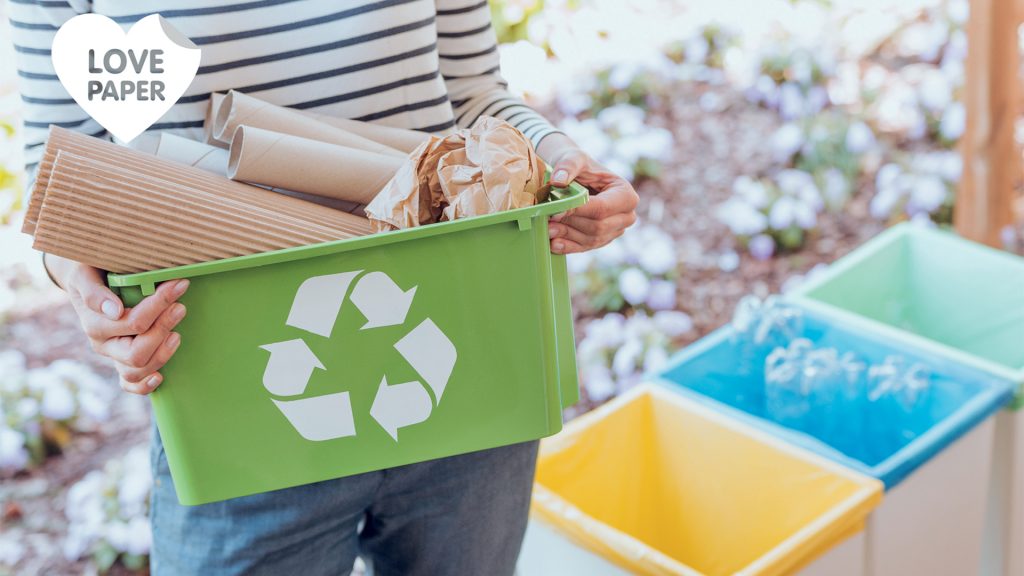In a world becoming more digital by the day – where does paper fit? Perhaps, the answer lies in simply being something worth appreciating —For it’s perfect simplicity> Here are some reasons why we should love paper…
Paper and print are with us from an early age starting with our first book and the newsprint we scribble on at kindergarten. We send and receive birthday invitations and love letters. We write in diaries, and earn pieces of paper that say we graduated. When you marry the love of your life—we record in the eyes of the Law—on paper. It’s sometimes easy to underestimate the impact paper has on our lives.
Love Paper is a global campaign run by The Real Media Collective. RMC is a not-for-profit organisation that promotes the sustainability of paper and print. The campaign’s purpose is to remind us that, even in today’s digital world, print and paper influence our lives in many positive ways. So why should we love paper?
Paper vs Screen
 Fifty per cent of Australians and fifty-eight per cent of New Zealanders agree that they spend too much time on electronic devices. A similar number of Australasians express that they are concerned about the potential health implications caused by the overuse of electronic devices. These include eye-strain, sleep deprivation, headaches or addiction1. Switching off, even for a short time, has been shown to improve mental well-being.
Fifty per cent of Australians and fifty-eight per cent of New Zealanders agree that they spend too much time on electronic devices. A similar number of Australasians express that they are concerned about the potential health implications caused by the overuse of electronic devices. These include eye-strain, sleep deprivation, headaches or addiction1. Switching off, even for a short time, has been shown to improve mental well-being.
Perhaps swap some of that screen time for page time?
Researchers consider paper as a type of brain fuel that improves learning cognition and enhances creativity. Neuroscience research has found children’s comprehension and recall improve when they read via a printed medium.
And, of course, after the past two years of lockdowns with working and learning from home—stepping away is more important than ever. Research, undertaken by Deakin University, in Australia, found that during the lockdown in the first half of 2020, children spent more than the equivalent of an extra day per week on smartphones, tablets, computers and watching television. Screen, screen, screen. Children aged between 5 and 12 saw the most significant increase. Dr Arundull, from Deakin’s Institute for Physical Activity and Nutrition, stated that ‘screen time has been associated with lower social development and social connections among children’. The message here is—that during these critical formative years, exposure to so much screen time is potentially detrimental to their development and wellbeing2. Perhaps, it’s time for a book?!
Sustainability
 Then there’s the story of sustainability. Seventy per cent of Australians and seventy-seven per cent of New Zealanders agree it is important to use paper products from sustainably managed forests3. This is good news for us, as Australia has 1.8 million hectares of productive plantation forest. New Zealand follows close behind with 1.7 million hectares. Of this, 1.2 million are certified by the Forest Stewardship Council (FSC) and the Programme for the Endorsement of Forest Certification (PEFC). These certifications provide guidelines and processes that help define ‘sustainably sourced’ paper. Thus reassuring consumers that they are contributing to the reforestation cycle—by renewing forests through re-planting and seeding. In fact, eighty-three per cent of New Zealanders believe planted forests benefit the environment4. And they’d be right!
Then there’s the story of sustainability. Seventy per cent of Australians and seventy-seven per cent of New Zealanders agree it is important to use paper products from sustainably managed forests3. This is good news for us, as Australia has 1.8 million hectares of productive plantation forest. New Zealand follows close behind with 1.7 million hectares. Of this, 1.2 million are certified by the Forest Stewardship Council (FSC) and the Programme for the Endorsement of Forest Certification (PEFC). These certifications provide guidelines and processes that help define ‘sustainably sourced’ paper. Thus reassuring consumers that they are contributing to the reforestation cycle—by renewing forests through re-planting and seeding. In fact, eighty-three per cent of New Zealanders believe planted forests benefit the environment4. And they’d be right!
Speaking of the environment, as we’ve become increasingly aware of the tidal wave of single-use plastics—paper and board have become the ‘go-to’ alternative for sustainable packaging. In addition, paper recycling rates in Australia and New Zealand are impressive. Over eighty-seven per cent and fifty-eight per cent, respectively, of all paper and board consumed is recovered5. Just a thought here—but have you ever wondered from where the materials in your phone originate? Or what happens at the end of its usable life?
Using responsibly sourced paper products provides many benefits—on both an environmental and a well-being level. Not to mention supporting the livelihood of hundreds of thousands of sector workers. So. Take a break from your device. Pick up a book. Complete a crossword or sudoku—old-school, pen and all. Choose the paper packaging option at the supermarket. More than ever—love paper!
Love Paper Time! 
Thinking a digital detox is on the cards for the kids? Need something to fill their time? Head to the Love Paper website for downloadable paper-based games such as battleships and wordsearch, puzzles, origami, colouring-in and drawing activities, postcards and more!


GSM would like to thank Isha Rathee, Marketing and Communication Executive @The Real Media Collective for her assistance in writing this article.
The Real Media Collective represents, promotes and advocates for the users, producers, and distributors of all consumer marketing channels. For more information go to: //therealmediacollective.com.au. For more information on the Love Paper campaign—head to: //lovepaper.org.au


